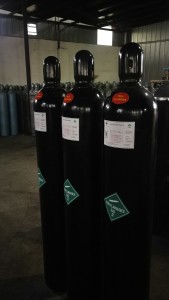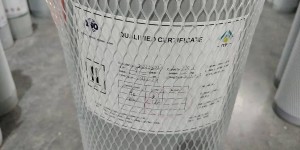Welding mixed shielding gas is designed to improve the quality of welds. The gases required for the mixed gas are also the common welding shielding gases such as oxygen, carbon dioxide, argon, etc. Using mixed gas instead of single gas for welding protection has a good effect of significantly refining molten droplets, promoting weld smoothness, improving forming, and reducing the rate of pores, and is very popular in welding, cutting and other industries.
Currently, the more commonly used mixed gases can be divided into binary mixed gases and ternary mixed gases according to the type of mixed gases.
The ratio of each component in each type of mixed gas can vary in a large range, which is mainly determined by many factors such as welding process, welding material, welding wire model, etc. Generally speaking, the higher the requirements for weld quality, the higher the purity requirements for the single gas used to prepare the mixed gas.
Two Components Mixed Gas
Argon+Oxygen
Adding an appropriate amount of oxygen to argon can effectively improve the stability of the arc and refine the molten droplets. The oxygen combustion-supporting properties can increase the metal temperature in the molten pool, promote metal flow, reduce welding defects, make the weld smoother, and speed up the welding speed and improve welding efficiency. In addition, the oxygen + argon shielding gas has a wide range of uses and can be used for welding carbon steel, low alloy steel and stainless steel of various thicknesses.
Argon+Carbon Dioxide
Carbon dioxide can improve weld strength and corrosion resistance, but pure carbon dioxide shielding gas splashes too much, which is not conducive to workers’ operation. Mixing it with stable argon can effectively reduce the metal splash rate. Using different proportions of oxygen + argon shielding gas has obvious advantages for welding carbon steel and stainless steel.
Argon+Hydrogen
Hydrogen is a reducing combustion-supporting gas that can not only increase arc temperature, speed up welding speed, and prevent undercutting, but also reduce the probability of CO pores forming and prevent welding defects. It has excellent welding effects on nickel-based alloys, nickel-copper alloys, and stainless steel.
Three Components Mixed Gas
Argon+Oxygen+Carbon Dioxide
This is the most widely used three components gas mixture, which has the combined protective effects of the above two components gas mixtures. Oxygen assists combustion, can refine the molten droplets, improve weld quality and welding speed; carbon dioxide can improve weld strength and corrosion resistance, and argon can reduce spatter. For the welding of carbon steel, low alloy steel and stainless steel, this ternary gas mixture has the best protective effect.
Argon+Helium+Carbon Dioxide
Helium can increase heat energy input, improve molten pool fluidity and promote weld formation. However, because helium is an inert gas, it has no effect on the oxidation and alloy burning of weld metal. Therefore, it can be used for carbon steel and low alloy steel pulse jet arc welding, high-strength steel, especially all-position short-circuit transition welding, and stainless steel all-position short-circuit arc welding by adjusting different proportions.
Post time: Nov-15-2024













